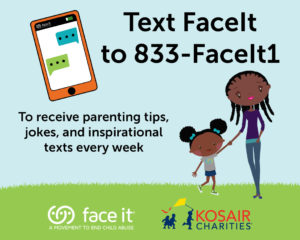
23 Apr Know What to Look For – Kids at Risk
This post originally appeared as a blog on the Center for Women and Families.
By Cortney Downs
Lauren doesn’t remember when the abuse and neglect started, but it makes up some of her earliest memories. As a baby, she was once left in her crib all day without being fed or changed. When her younger siblings were born she took on the role of caretaker and protector, teaching them not to cry or tell anyone what went on in their home. By the time she entered high school, Lauren had endured years of physical abuse and neglect, sexual assault, and family dysfunction.
April is both Sexual Assault Awareness and Prevention Month and Child Abuse Prevention Month, and though they are typically celebrated separately, the two are inextricably linked. Children, like Lauren and her siblings, who live in homes where intimate partner abuse and dysfunction are present are at an increased risk for being physically and sexually abused.
Kentucky currently has the highest rate of child abuse and neglect in the nation with approximately 22 out of every 1,000 children being victimized. In Jefferson County, more than 3,000 children experienced abuse and neglect in fiscal year 2018 alone. And of the substantiated cases of child abuse and neglect in 2017:
• 1,870 experienced neglect;
• 199 experienced physical abuse; and
• 65 experienced sexual abuse.
Lauren, now in her mid-twenties, believes that people knew there was abuse in her home, but they never acted on it. Knowing what to look for is important, but so is remembering that every child processes their trauma differently. Some may become withdrawn or inexplicably angry, while others excel in school and extra-curricular activities. For more detailed information on recognizing the signs and symptoms of abuse, check out the Child Welfare Information Gateway’s fact sheet, available here.
If you are a parent or caretaker, community member, or a professional who works with children, the Face It Movement has posters, brochures, and guides available for free. These resources provide information on child abuse prevention, reporting and recognition, and body safety, among others.
This April let’s remember that physical and sexual violence impact children and adults at alarmingly high rates. And for people like Lauren, it may all be happening under the same roof. As we advocate for the rights and protections of one group, we’re advocating for the other. It’s up to all of us to work together to create a world free from abuse and sexual violence for every child, adult, and family.
The Center for Women and Families is a partner in the Face It Movement.




